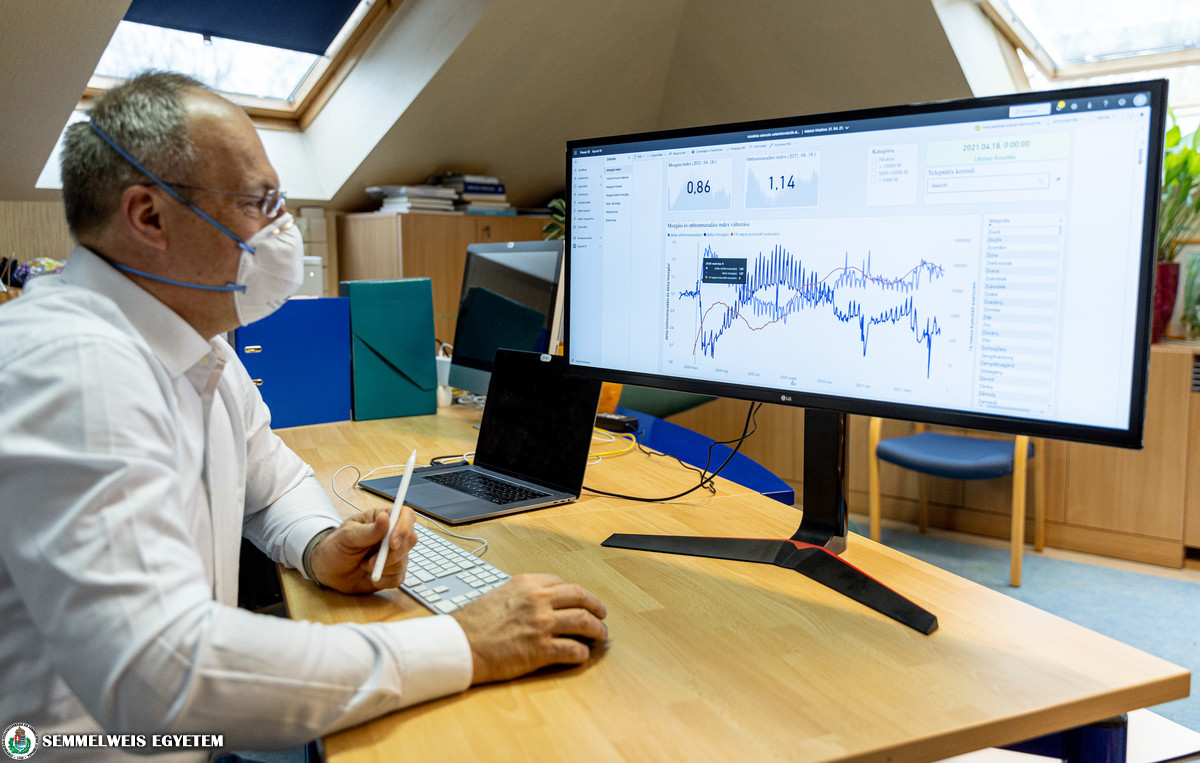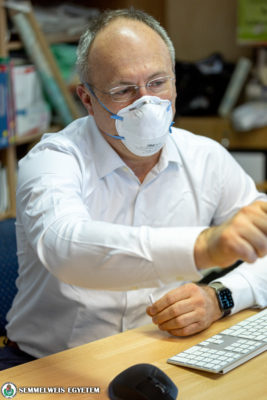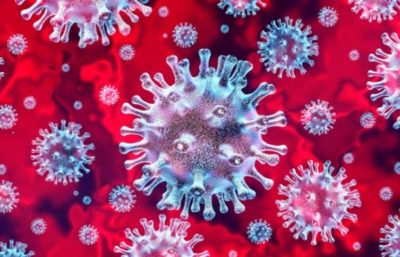More than two billion data sets related to mobile cell information are stored in the management information system supporting infection control, which monitors the national population movements and was developed under the leadership of Semmelweis University’s Faculty of Health and Public Administration. The database created for decision-makers can be searched on the basis of several criteria (e.g. breakdown by settlement size, specific districts, settlements, dates) and detailed diagrams show the movements of the population in a given place and period during the COVID-19 epidemic. The study of Hungarian experts on the countrywide analysis covering the entire period of the epidemic was published in Nature Scientific Reports.
“The management information system set up under the leadership of Semmelweis University’s Faculty of Health and Public Administration contains the daily cell information of the country’s 9 million mobile phones over the past year. The system includes more than two billion data records, however, it is important that this depersonalized, aggregated information is not suitable for personal identification and is in accordance with data protection (GDPR) laws”, said Dr. Miklós Szócska, Dean of the Faculty of Health and Public Administration.
 The national mobility tracking methodology and the management information system enabling data-based analyses were developed by the data utilization and digital working group closely connected to the Faculty of Health and Public Administration within the Epidemiological and Mathematical Modeling Working Group of the Ministry for Innovation and Technology, in cooperation with the three Hungarian mobile service providers. Their results have recently been published in the journal Nature Scientific Reports. The leading authors of the publication are Dr. Miklós Szócska, the current dean of the faculty and Dr. Péter Gaál, former dean.
The national mobility tracking methodology and the management information system enabling data-based analyses were developed by the data utilization and digital working group closely connected to the Faculty of Health and Public Administration within the Epidemiological and Mathematical Modeling Working Group of the Ministry for Innovation and Technology, in cooperation with the three Hungarian mobile service providers. Their results have recently been published in the journal Nature Scientific Reports. The leading authors of the publication are Dr. Miklós Szócska, the current dean of the faculty and Dr. Péter Gaál, former dean.
“The methodology is based on routine data automatically recorded when using a mobile phone. It uses location data from the transmission tower transmitting the call to estimate the geographical location of the phone owner. We can monitor whether one transmission tower transmitted the phone to another tower or not, whether the owner moved between the zones or stayed at home”, Dr. Miklós Szócska explained.
“The data stored in the system cover the entire epidemic period of more than one year, and can be searched by date and geographical location. The diagrams show processes precisely, like the migration of a large number of residents of Budapest to the settlements by Lake Balaton to spend the quarantine period in their holiday homes, or the fact that movement decreased by almost 30% after the introduction of the restrictive measures in March 2021”, said Dr. Miklós Szócska.
“With the help of the information system, the effect of a restrictive measure can be accurately traced, it is possible to monitor the territorial differences and local peculiarities in the movement of people. This is why it is suitable for making high priority decisions related to infection control”, Dr. Miklós Szócska emphasized.
 Dr. Miklós Szócska highlighted the importance of the fact that during the development of the system, a unique cooperation was realized with the three Hungarian mobile service providers. The methodology can be used to prepare analyses providing support in infection control with a small financial contribution, it can be easily adapted to other countries, and it can also be made suitable for the analysis of migration between member states. It may even be used for connecting movement data with data on local infection rates.
Dr. Miklós Szócska highlighted the importance of the fact that during the development of the system, a unique cooperation was realized with the three Hungarian mobile service providers. The methodology can be used to prepare analyses providing support in infection control with a small financial contribution, it can be easily adapted to other countries, and it can also be made suitable for the analysis of migration between member states. It may even be used for connecting movement data with data on local infection rates.
The paper was published in Nature Scientific Reports on 15 March, 2021. As the dean pointed out, the publication of the paper is of great interest both internationally and in Hungary, and the research team has received several requests for research cooperation. Based on the Altmetric Attention Score related to the quality and quantity of online attention, the publication is in the TOP 10% of the list comparing about 260,000 publications published around the same time globally.
In addition to the experts of Semmelweis University’s Faculty of Health and Public Administration (Dr. Miklós Szócska, Dr. Péter Gaál, Tamás Joó, Dr. Tamás Palicz, Dr. Péter Pollner), Magyar Telekom, Telenor, Vodafone Hungary, and an SME of Business Intelligence (BI) development led by Dr. István Schiszler also participated in the preparation of the scientific paper presenting the results and methodology of innovative research supporting the management of Hungarian and global infection control. Furthermore, a collaboration was established with the Institute of Physics at Eötvös Loránd University and the London School of Hygiene & Tropical Medicine.
Pálma Dobozi
Photo: Attila Kovács – Semmelweis University
Translation: Katalin Illés-Romhányi


